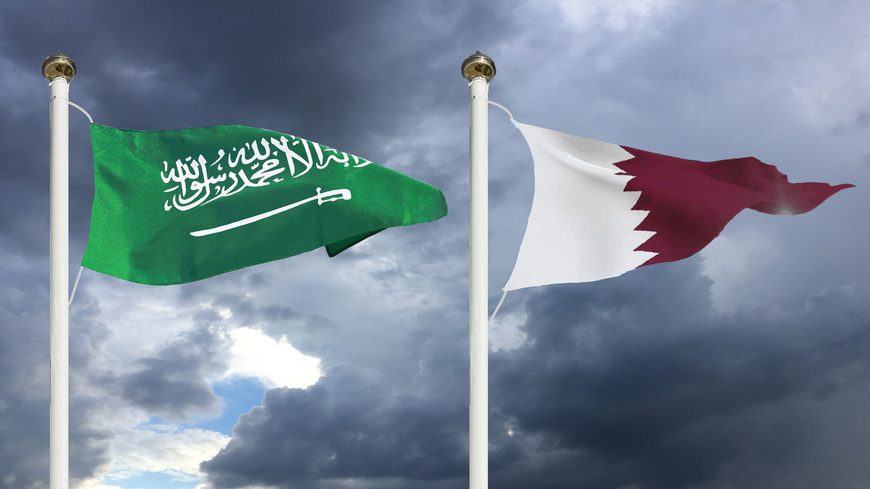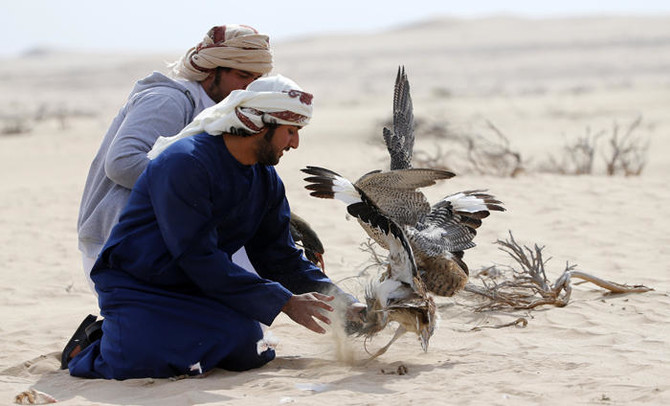Both countries have been working on strengthening diplomatic ties since the signing of the Ula Declaration.
Qatar’s border with Saudi Arabia has been moved further towards the kingdom, expanding the peninsula’s geographical boundaries as both countries work on strengthening ties and resolving outstanding issues.
https://twitter.com/nadeebqa/status/1456018168858779652?s=24
Khawr al Udayd is located in Al Wakrah Municipality in southeast Qatar, on the border with Saudi Arabia. The Qatari flag was reached following the agreement with the Kingdom on demarcating the border between both nations.
The expansion is part of a deal reached with Saudi Arabia to return full sovereignty of the southern shore of the Khor al Udeid to Qatar, Andreas Krieg, Associate Professor in security studies at King’s College London, explained to Doha News.
“This deal predates the Gulf Crisis. The handover of that territory from Saudi Arabia to Qatar was meant to happen earlier, but this project was not taken forward as the Gulf Crisis unravelled. As part of the Al Ula agreement, the two have now finalized the handover. This is a trust-building measure that is symbolic of improving relations between Qatar and Saudi Arabia,” the expert added.
In the graphics below, the green line marks the border between Qatar and the Kingdom after the demarcation.
The latest amendment is the nations’ latest apparent move to improve Saudi-Qatar relations after a three-year diplomatic crisis.
Ties were left strained in 2017 when Saudi Arabia, the United Arab Emirates, Bahrain and Egypt severed all diplomatic relations with Qatar and imposed an illegal air, land and sea blockade over allegations that it supports terrorism.
Qatar has consistently denied those claims.
Diplomatic ties between both countries have been warming since the signing of the Al-Ula declaration on 5 January this year, bringing to an end a three-year rift that disrupted the Gulf region’s unity.
Recent months have shown great strides towards Saudi-Qatar cooperation.
Qatar-Saudi relations
In August, Qatari and Saudi delegations met to establish a coordination council to advance bilateral relations and partnerships between the two Gulf nations as part of Saudi’s Vision 2030 and Qatar’s National Vision 2030.
The same month also saw Saudi Foreign Minister Prince Faisal bin Farhan al-Saud saying relations between Saudi Arabia and Qatar were “very good”.
In addition, Doha appointed its newest envoy to Riyadh, marking the official restoration of diplomatic ties between the two states.
Amir Sheikh Tamim bin Hamad Al Thani appointed Al Attiyah as the country’s first ambassador to Saudi Arabia, the first such appointment since the 2017 GCC crisis erupted.
This came two months after Doha received its first Saudi Ambassador Prince Mansour bin Khalid bin Farhan in June, which was seen as a major step toward restoring ties between the two neighbouring countries.
In September, Amir Tamim was pictured with Saudi Crown Prince Mohammed bin Salman and UAE’s National Security Advisor Sheikh Tahnoon bin Zayed after a “cordial” meeting in the Red Sea.
The image of the three Gulf officials, all pictured donning casual shorts and shirts, went viral online.
Qatar’s Amir Sheikh Tamim bin Hamad Al-Thani has also participated in the Middle East Green Initiative Summit in Riyadh last month at the invitation of Saudi Crown Prince Mohammed bin Salman [MBS].
The participation of Sheikh Tamim in Riyadh is yet another indicator of developing relations between Doha and Riyadh, both of which were involved in a bitter dispute that left Qatar blockaded for three years.
On the region level, Doha has also echoed its willingness to mediate between Riyadh and Tehran to ease regional tensions since Qatar and Saudi Arabia restored diplomatic ties after a four-year bitter dispute between GCC member states.
“We want a quiet region. We hold consultations with Iran and keep our channels open with Tehran. We do not want to see a nuclear race in the region,” said Qatar’s Foreign Minister Sheikh Mohammed bin Abdulrahman Al-Thani in an interview with the US Council on Foreign Relations [CFR] in September.
End of the long beoutQ—BeIN Sports dispute
More recently, officials reached an agreement to lift a Saudi ban on Qatar’s beIn Sports last month.
The dispute erupted shortly after the 2017 blockade; the Qatari broadcaster was blocked to hundreds of thousands of subscribers in Saudi Arabia.
Two months later, Saudi-based outfit beoutQ, began broadcasting content stolen from beIn. The signal was transmitted using Saudi Arabia-based communications satellite operator, Arabsat.
BeoutQ’s sophisticated theft of intellectual property developed when it launched set-top boxes and started selling subscription packages to air English, Italian, Spanish and German football games.
The recent agreement signals an end to a long-running dispute between the two Gulf states, which had been locked in a political crisis that ended with signing the Al Ula Declaration earlier this year.
Meanwhile in business
The Gulf countries have also mended business relations. Last month, leading Saudi real estate developer Dar Al Arkan announced its first entry into Qatar with a QAR 700 million “premium project” to develop Qetaifan Island North.
Qetaifan Projects, a leading Qatari real estate development company owned by Katara Hospitality, signed an agreement with the Saudi property developer.
The work project consists of five South Marina Promenade plots overlooking the Island South and the South Marina Promenade.
The agreement marks Dar Al Arkan’s first entry into Doha and one of the first partnerships between companies in both countries since the GCC crisis ended earlier this year.
Follow Doha News on Twitter, Instagram, Facebook and Youtube







